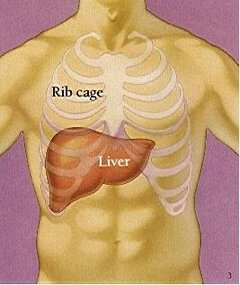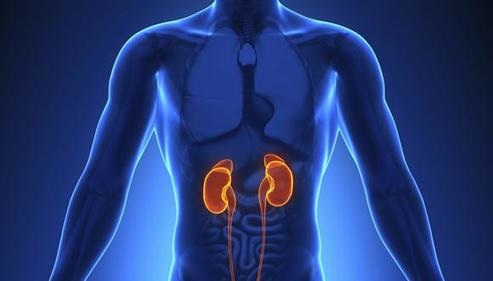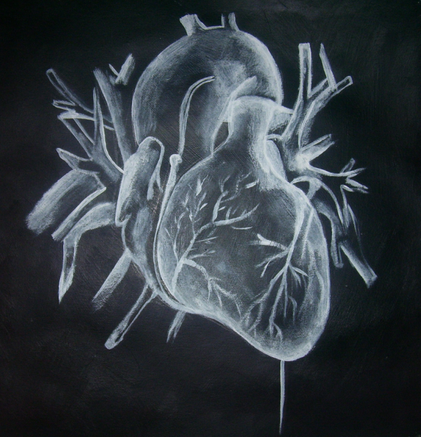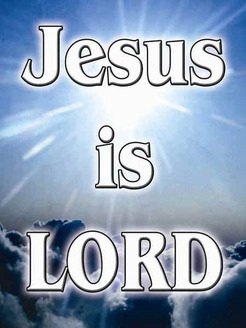Introduction
Alright, I'll admit it: the title of this article feels a little click-baity. Truth be told, I did that intentionally. I also wasn't entirely sure which grouping to put this article under: it sort of belongs under Word Studies because it centers on the exegesis of a couple Greek words. However, it also belongs under somewhat of a cultural study. Yet then again, since I am writing a response against what I believe to be a dangerous and immoral practice, we could likely say it falls on Apologetics and Daily Life, as it has potential to impact people in numerous ways. But at the end of the day, I have filed this under Language and Word Studies for the aforementioned reason. I digress.
Recently, I was sent an article by a Mr. Charles Dowell, who operates the website StraitwayTruth and runs a church of the same name. A quick once-over of the many posts on both the website and the Facebook page demonstrated much material to me that is, sadly, reminiscent of my Messianic Cage Stage days. Much conspiracy and sensationalism dominate their materials. The article in question - which I will link to below for honesty's sake - is essentially making the assertion that when 1 Timothy 3:2 states that an elder must be the "husband of one wife" it actually means the man must have at least one wife. The author claims it really should be understood as "a first wife" among many possible wives, not a restriction to a single wife. Now normally, I would ignore such a site and move on. After all, it doesn’t really affect me, and honestly there isn’t enough time in a day for me to craft decent responses for some of these issues and teachings. However, a friend of mine reached out to inquire about an issue concerning the Greek text of 1 Timothy, as it is referred to by Mr. Dowell in his article. The article in question – if you wish to review it – can be found here. In short, it is a brief treatment of 1 Timothy 3 as it relates to polygyny, a practice which Mr. Dowell readily encourages. (Red Flags, anyone?)
0 Comments
Introduction
The moon. It has been a recurring topic of discussion among Torah Observant groups in recent years. Not so much because of its size or shape or composition, but due to its use in ascertaining the Biblical months. That is, which lunar phases should be use to start counting the days of a month? Some argue for a crescent moon (the first visible sliver of a waxing phase); others for a conjunction (an astronomical moment in time when the moon is not visible at all). Yet still others have argued – albeit rarely – for a full moon. Then there are those who reject this lunar observation entirely in favor of a strictly solar calendar. By that I mean, that the moon is not used for determining or setting the months at all, and instead it should be the sun. This would mean a month (in Biblical terminology) would be a set number of days (either 30 or 31, depending on which variation of solar calendar theory one opts for), rather than the 29/30 days alternating found in the lunar calendar.
Study to shew thyself approved unto God, a workman that needeth not to be ashamed, rightly dividing the word of truth. - 2 Timothy 2:15 (KJV)
That's how the King James puts it. And no doubt, many of us have memorized (or at least, stored a paraphrased version of) this verse from the KJV. In particular, the part to "rightly divide the word of truth." Now I don't know about you, but for me, having spent my entire life in the Bible Belt, I've heard plenty a' Southern preacher proclaim this verse as a means of explaining dispensationalism. Namely, that the need to "rightly divide" the word, means to understand the difference in what was for then/them (Jews of the OT era), and what is for Believers today. So far in this series, we’ve looked at the heart, the liver, the kidneys, and the nose. This time, we’ll look at something that is specific to women: the womb. While this article is a short one, I believe it is nevertheless a crucial part of what this article series is building up to.
Over the years, Torah Keepers have struggled with what title to use in reference to a Torah teacher. Should they just be called 'teacher'? What about 'pastor'? Some prefer the Jewish term 'Rabbi' while others wholeheartedly oppose it. This opposition typically stems from a verse in the Gospels.
Mattithyahu [Matthew] 23:8 - But do not be called Rabbi; for One is your Teacher, and you are all brothers. Because of this, many in this walk have opposed the title, and I have personally witnessed numerous heated debates and arguments over the use of said title. In the previous parts of this series, we have examined three of the vital organs in the human body: the heart, the kidney(s), and the liver. This time, we're going to move away from the organs. We're going to look at the nose. Commonly overlooked, you will be amazed at the number of times the word "nose" actually appears in Scripture.
When we read Scripture through our modern translations (primarily English, but be it in any language), we tend to miss some of the little nuances and nuggets that are present in their original languages. The Hebrew language is a perfect example of this, especially in the words it uses to describe the parts of the human body.
In Part 1 of the Hebrew Anatomy series, we looked at what is one of the most important organs in our body: the heart. We saw how it connects to the mind, and the thoughts. In Part 2, we looked at the kidneys, and how they connect to the emotions. In this installment, we will examine the liver.
In Part 1 of the Hebrew Anatomy series, we looked at the heart, and how it is described in the Bible. How the very language of Scripture itself uses the word that we have come to view in English as "heart." In Part 2, we will be looking at the kidneys, and how they are related to something more than just a regulatory organ.
We have all read the Scriptures before that speak of the "heart of man" or about King David being a "man after God's own heart." (1 Sam. 13:14; Acts 13:22). Yet generally, due to our Western (Greco-Roman) mindset and worldview, we think of this in an emotional sense. We think of "heart" as the seat of the emotions. But did you know that according to the example set in the Hebrew Scriptures, that is actually not true? In this brief article series, we're going to examine some anatomical terminology that the Scriptures use, and see about digging up a deeper meaning. These articles will explain how the physical parts of the human body (heart, kidney, liver, etc.) is related to a deeper spiritual meaning, and how they relate to the soul itself.
This writing will be brief (compared to some of my other writings). I simply want to use a few historical and Scriptural facts to make a few points, and primarily to address some false assumptions and false teachings that are going around. If you've been Torah Observant (and been on the Internet) for any length of time, you've no doubt encountered most if not all of these teachings. Sadly, many fall prey to them when they are new to this walk. The feeling that you've been lied to and betrayed by the normative Christian Church for so long has led many to reject any and all orthodoxy. I tend to say, "A little bit of orthodoxy can go a long way." And yet, not everything the Church does or has done is wrong. It is also unfair to speak so monolithically, as if the "Church" were a singular entity, all sharing the same beliefs and practices. One need only a attend an Anglican or Greek Orthodox service and then a non-denominational Charismatic service to understand there are just as many differences between Christian denominations as there are between Torah-keepers and the average evangelical. Not everything they believe is a lie. And many things are merely misconceptions.
|
AuthorJonathan Andrew Brown Archives
July 2022
Categories |











 RSS Feed
RSS Feed